By Norbert Schiller
Photographs and Illustration from my personal collection.
Before donkeys and mules partnered up with armies around the world, other animals were used for that purpose. The first record of canines used in battle goes back to the 6th century BC when trained attack dogs fought alongside soldiers defending the Kingdom of Lydia, in Asia Minor, against the Cimmerians. Unfortunately, the treatment of dogs during wartime was sometimes inhumane. During the early years of WWII, when the Soviet army was desperately trying to hold back the German assault, soldiers turned to strapping suicide vests on dogs to blow up advancing German tanks.

A French mountain artillery mule train, circa 1860s (L). A French soldier on patrol in his armored vehicle in the Moroccan desert takes time out to pose for a photo on a donkey belonging to a bedouin. Circa 1950s

On 27 October 2015, Australia Post issued a series of postage stamps commemorating animals that served in combat alongside soldiers.
The animal which has been most widely associated with warfare is the horse. Archeological evidence in the steppe in Central Asia have revealed that horses were used for military purposes going back 5,000 years. Armies across Europe and Asia relied on horses more than with any other animal to carry soldiers into battle. Genghis Khan and his men crossed the Mongolian steppe, Persia, the Middle East, and eastern Europe on horseback annihilating any army that attempted to stop them. Horses also carried knights into battles across Europe for centuries helping create the borders of what is today modern Europe. The Crusaders traveled to Jerusalem on horseback to liberate the holy city from the Muslim invaders. During some of those crusades, they used specially designed boats to carry horses from Europe to the shores of Palestine. When early European settlers sought out to conquer the New World, they brought their horses with them introducing them to the continent. The arrival of conquistadors in full body armor on stallions terrified the indigenous people until they learned how to utilize the horse for their own military purposes. Later, the battle for the American “wild west” was fought on horseback.

French soldiers on donkeys waving their sabers in Les Sables-d’Olonne, located near the sea in southwest France, circa 1910s. A WWI French cartoon shows German officers in a car pulled by a horse as they were retreating. The note on the postcards says,”Eight days ago my horse was drinking from the (river) Seine.” Photogravure (L) L.Amiaud
The horse’s role in warfare came to an end at the beginning of the 20th century with the introduction of the automobile. Ironically, while horses were being retired from the army, their cousins, donkeys and mules, were being inducted into various militaries as they were considered to be better pack animals. During the two world wars, donkeys and mules played a key role in transporting supplies over rugged mountains and jungle terrain inaccessible to motorized vehicles. British troops stationed in Egypt, Palestine and Yemen, American soldiers deployed in Lebanon in 1958, and French troops fighting in Algeria in the 1950s and 60s also relied heavily on the four-legged animals to haul equipment.
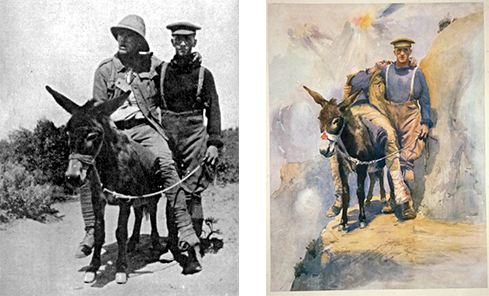
James Gardiner Jackson’s photo of a wounded soldier being taken to a field hospital on the back of a donkey inspired Horace Moore-Jones to paint his iconic watercolor. Painting courtesy of the Alexander Turnbull Library, Wellington, New Zealand.
During the Battle of Gallipoli in World War I, a medic from New Zealand took a photograph of a fellow countryman transporting a wounded soldier to a field hospital on donkey back. James Gardiner Jackson’s capture was immortalized when artist Horace Moore-Jones, another New Zealander who fought in Gallipoli, drew a number of paintings based on that image. It turned out that the stretcher-bearer, Dick Henderson, had used his donkey to save many other wounded soldiers. Today, Moore-Jones’ paintings, which honor the act of sacrifice during times of conflict, hang in war memorials and museums in New Zealand and Australia.
Donkeys and mules were also heavily used in World War II. During the Allied campaign against the Japanese in the Philippines and Southeast Asia, the animals were used to carry heavy loads through the jungle. They were also often the first line of defense protecting soldiers from shrapnel when bombs landed nearby. Due to the shortage of mules in the Pacific, the US army had to ship the animals all the way from the West Coast which was sometimes a dangerous operation. The Japanese sank two such freighters killing all animals onboard. On the Italian front, donkeys and mules were procured locally as the US and British military made their way up the boot of Italy. In exchange for their confiscated animals, farmers received US army vouchers to be used later for reimbursement.
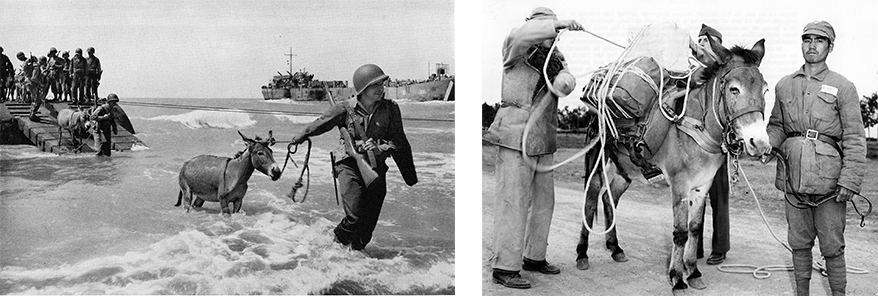
American soldiers during WWII bring donkeys ashore in southern Italy; in Southeast Asia American soldiers load a mule with supplies before entering the jungle.
Despite their utility on the battlefield, donkeys and mules had two major drawbacks. The obvious disadvantage was the animals’ tendency to bray loudly at inopportune times alerting the enemy. The other challenge was the light color of some of the Italian donkeys which made them easy to spot. To thwart these problems, the military had the animals’ vocal cords removed and used a dark dye to camouflage light colored donkeys.

French soldiers with their pack donkey on maneuvers in Algeria, September 1956 (L). When U.S. Marines were deployed to Lebanon in 1958 they used locally purchased donkeys to help carry supplies into the foothills above Beirut.
In 1958, US President Dwight Eisenhower dispatched his marines to Lebanon in response to an appeal by the country’s Christian leader facing the threat of an increasingly popular pan-Arab movement. Although the deployment appeared to be an attempt to rescue the beleaguered Lebanese president Camille Chamoun, the U.S.’s real motivation was the perceived danger to regional stability after the overthrow of Iraq’s pro-western regime and the rising popularity of Egyptian President Gamal Abdel Nasser, an ally of the Soviet Union. The marines, who did not engage in any significant military exchanges, stayed for three months during which they bought donkeys on the local market for as little as five dollars (50 dollars today) to assist them in carrying their supplies into the foothills.
In recent years, a photo was circulated on social media allegedly of a soldier carrying a baby donkey on his back through a minefield during WWII. However, an investigation by American military historian Douglas Porch, who wrote the book The French Foreign Legion, showed that the photo was taken in Algeria. A unit of the French Foreign Legion had found the starving foal taking it upon themselves to rescue it. The September 1958 edition of the French magazine Paris Match had reported the incident as well as some British publications. The soldiers, who named the donkey Bambi and made it their mascot, received a bronze medal from the Royal Society for the Protection of Animals in London.
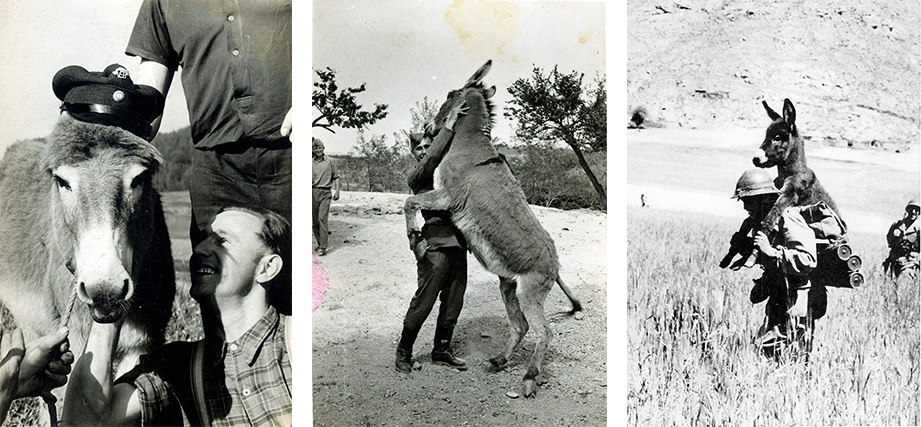
A special bond often develops between soldiers and donkeys. Bulgarian soldiers put an army cap on a donkey, circa 1950s. A Yugoslav soldier is greeted back at base camp by his donkey, circa 1950s. A member of the French Foreign Legion rescues a starving baby donkey while on patrol in Algeria, August 1958.
Donkeys and mules continue to be used in present day warfare. In Afghanistan, which has been in conflict in recent history since the Soviet Union invaded in 1979, donkeys are often the only means to transport supplies and weapons due to the country’s steep and rocky terrain. The animals are indispensable when mountain passes are closed or when flooding knocks out roads and bridges.
In spite of their value on the battlefield, donkeys and mules in the military have not escaped the ridicule of their fellow soldiers. During WWII a series of postcards were issued making light of young men going off to war. Many of the cards depicted donkeys in comical scenes such as a soldier riding a donkey during maneuvers, “These maneuvers make my ASS tired!” Another one shows a female soldier lying on the back of a donkey, “Send cash – I’m flat on my ASS.”

Comical postcards made during WWII show the lighter side of going off to war .

American navy sailors race donkeys somewhere on the Arabian Peninsula, circa 1950s. British servicemen play donkey polo at a military base in northern Egypt during WWII.
While animals have accompanied warriors to the battlefront for centuries to assist them in logistics or in conquering the enemy, many have been retired to be replaced by technology. However, donkeys and mules have proven to still have a competitive advantage allowing them to play a role in modern warfare. Whether they are assisting soldiers on the battlefront or giving them the opportunity to burn off steam around base camp, donkeys and mules have proven to be reliable, hard-working, patient, and even heroic companions. They have most certainly earned their stripes.
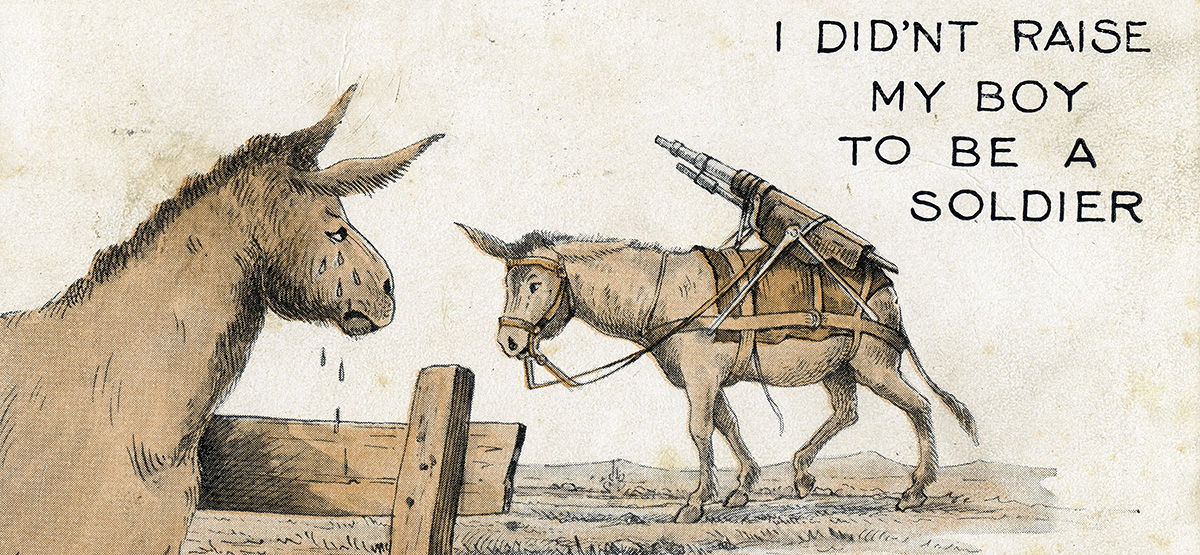
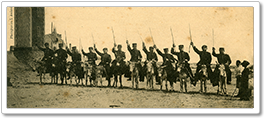
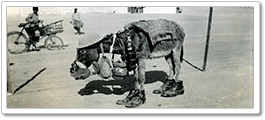
The small donkeys being unloaded …they were Canadian Wireless Corp,invasion of Sicily, WW2.
This photo was sold online maybe 15 yrs ago. I know as I was the losing bidder.
It was originally a press photo. I recall small donks could carry reels of wire for radio communication.